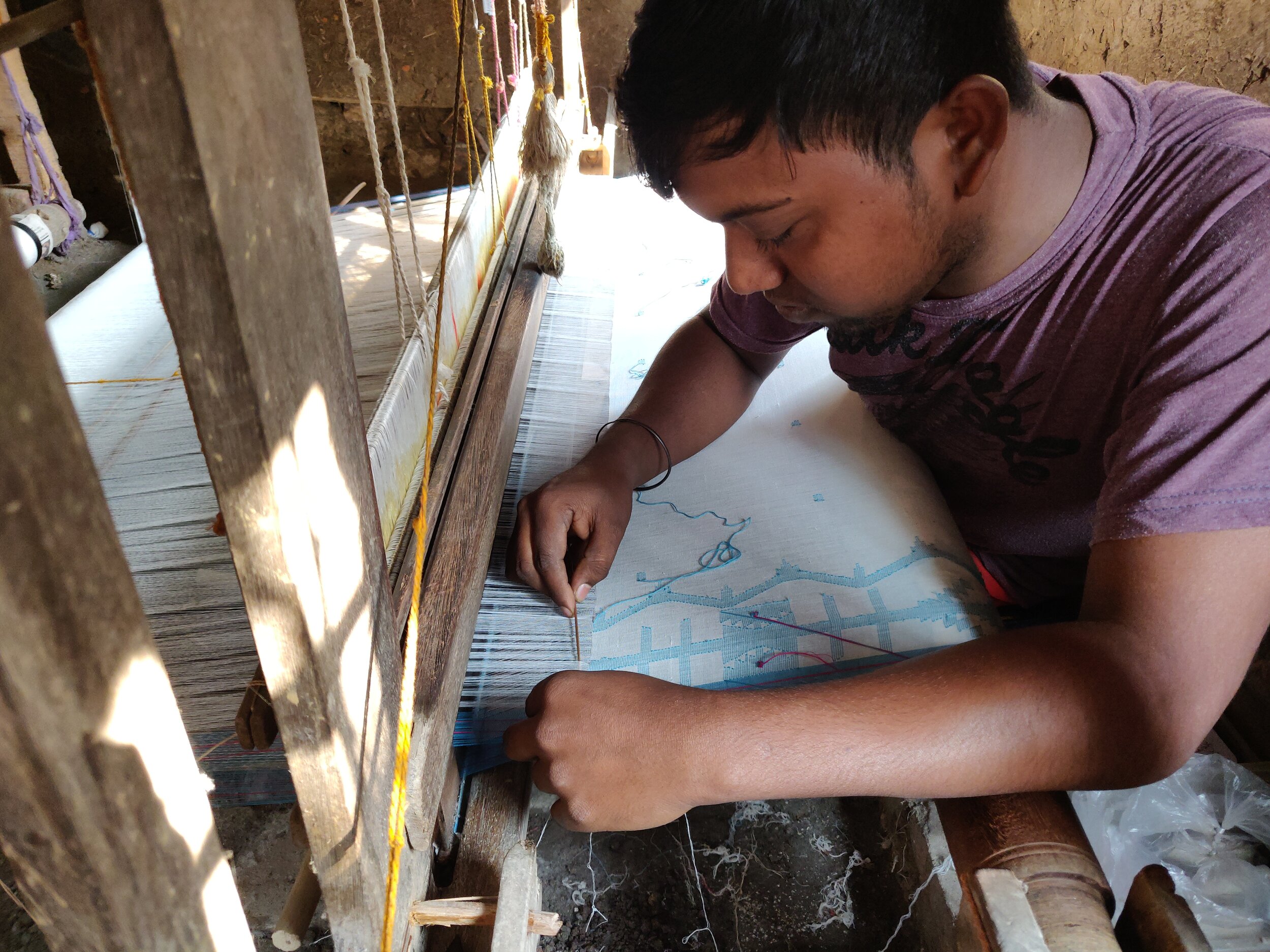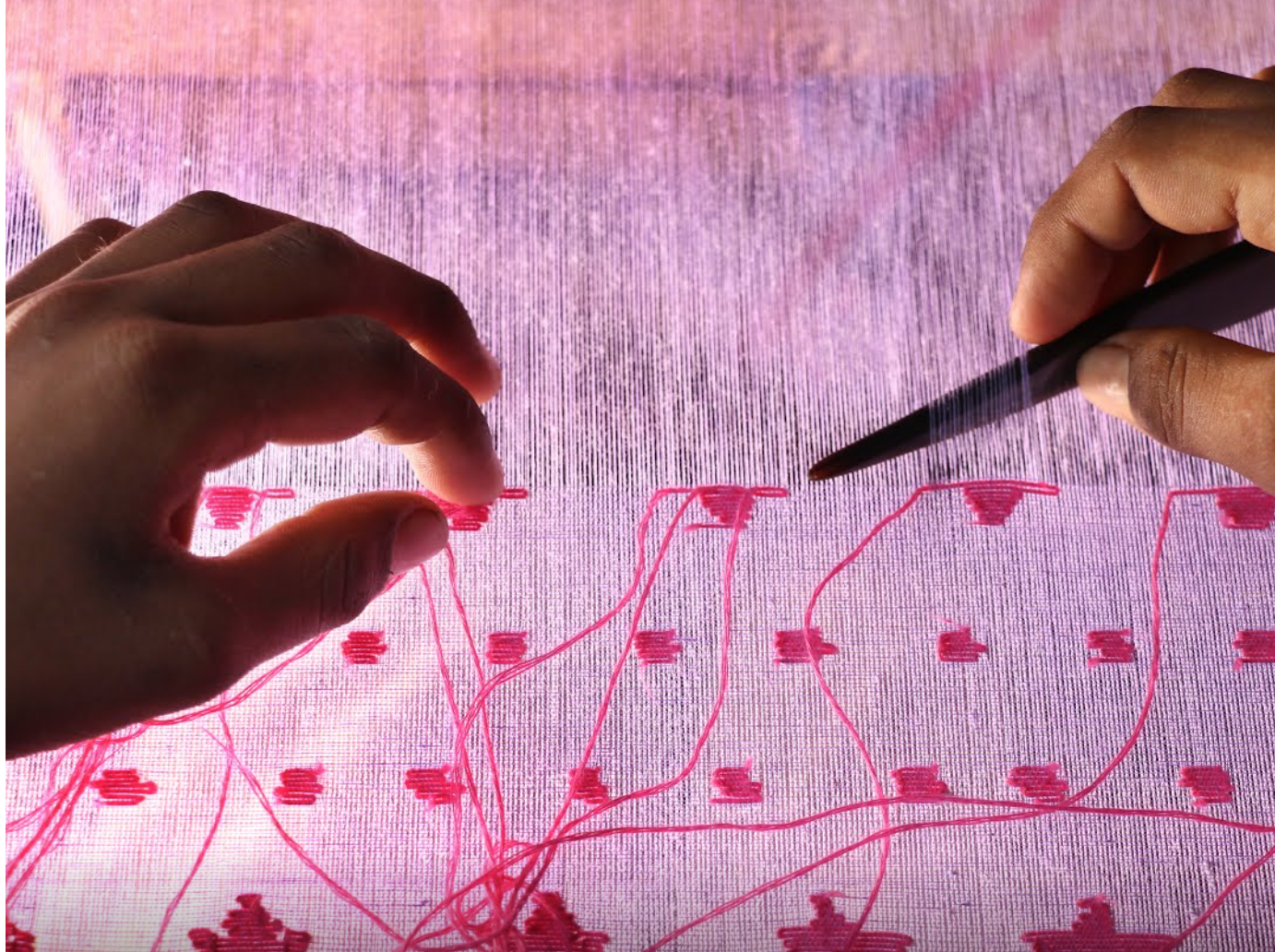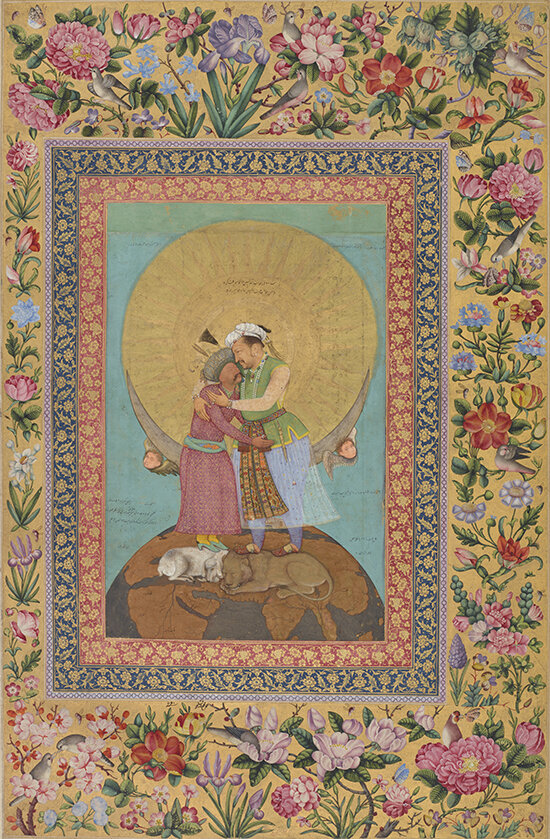The Delights of Jamdani Weaving
The textural motif against an airy muslin fabric is the definition of the heritage Jamdani cloth. Traditionally woven on a handloom, the motifs are woven by the discontinuous weft technique through which the threads necessary for the design appear only there in order to maintain the transparency of the muslin. The weaver uses a hand tool made of horn, called a kandul, to lift individual warp threads to introduce the supplementary threads. Prized for its lightness, a textile’s value could also emerge from how delicately its threads had been spun, how gently the spindles were unfurled to create the warp, and how carefully its thin warp fibres had been threaded through the interlocking heddles of the loom. Jamdani muslin is special to modern days Bangladesh and West Bengal in India, where a wide variety of geometric and repeat patterns are woven, as well as the traditional floral and figured designs.
The traditional art of Jamdani weaving in Dhaka was inscribed on the Representative List of the Intangible Cultural Heritage of Humanity by UNESCO in 2013 in honour of its esteemed history. The first references to Jamdani occur in the 17th century during the time of the Mughal Empire when Emperor Jahangir (r. 1605–1627) wore a sash of Jamdani woven with floral designs. The Jamdani was made of Dhaka muslin of such fine quality that it was said that it was spun from the air, as only the finest gossamer filaments of the cotton were used. Such fragile fibres could only be worked in humid air by the supple fingers of young women who worked surrounded by bowls of water or on moored boats, giving rise to the legend that Dhaka muslin was made by mermaids singing in the mist.
The Dhaka muslin industry was lost during the 1900s and Jamdani weaving is all that remains, yet Jamdani saris remain the finest and most sought after in the world. With a combination of muted or vibrant colours, Jamdani is getting popular again - seen in both saris and contemporary dresses. The finished garments are highly breathable.
The Jamdani sari is a symbol of identity, dignity and self-recognition and provides wearers with a sense of cultural identity and social cohesion. The weavers develop an occupational identity and take great pride in their heritage. They enjoy social recognition and are highly respected for their skills. A few master weavers are recognised as bearers of the traditional Jamdani motifs and weaving techniques, who also transmit the knowledge and skills to disciples. However, Jamdani weaving is principally passed down within families in home workshops. Weavers, together with spinners, dyers, loom-dressers and other supporting practitioners made up of both men and women, form a closely-knit community to maintain the weaving practice.
In the mid 20th Century, many weavers from Bangladesh migrated to India and created variations of Jamdani which are more easily contemporise. West Bengal based enterprise, Anuprerna, is one of those committed to creating Jamdani cloth with four clusters of weavers spread across the Burdwan district in West Bengal, India. Founder Amit Singha builds on the solid relationships with weavers started by his father in the 1980s, is now focusing on giving them market access. It takes a week to prepare and dye yarns with natural dyes. Then, Anuprerna provides weavers with the required materials, taking 2 weeks to set the loom. One to two metres of fabric is woven per day on each loom. Once woven, it takes a week to wash and finish.
"We strive to create a recognition for this beautiful craft to bestow value onto ordinary lives of these artisans with extraordinary skills. Jamdani being a really customizable technique, we are collaborating with designers around the world to bring in their cultural exposure to these traditional motifs to create modern contemporary ideas," said Amit Singha.
Truly rooted in communities, Anuprerna created a COVID 19 support campaign in 2020 providing artisans baskets of essential supplies including food and household necessities, and sometimes a stipend to ease their financial burden during the pandemic. As Amit explained, “Working directly with artisans for a long time gave us a perspective of their lifestyle. These artisans are built around a village community where they are born and brought up. They love to enjoy an inclusive society in the time of festivals and other ceremonies. That’s why they love to work in the comfort of their home, their community. Without any desire for luxury, they just want to get fairly paid and need consistent work. Unfortunately, this unprecedented event has collapsed the whole industry. Therefore, we are offering the best we can to take our artisans through these tough times.”
Anuprerna also works with a range of handloom silk fabric, khadi fabric and shibori dyed fabric, expanding the products from the domestic market to overseas through collaborations with international designers.















